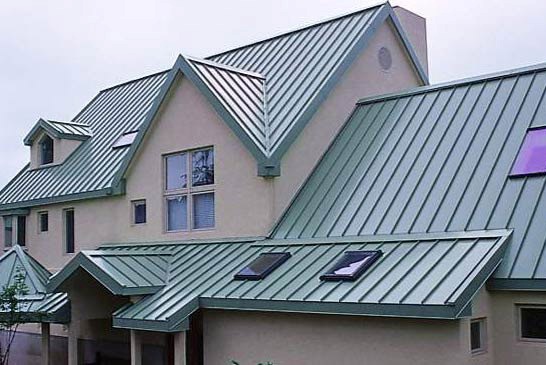How to Know the Best Time to Replace Your Roof
To help develop this article click 'Edit this article' above.
Contents |
[edit] Introduction
The roof of your home is an essential part of your weather protection and your energy efficiency. Due to the fact that it’s often exposed to extreme temperature swings and various weather occurrences, you will have to learn about its maintenance. Here, you have two options – repair and replacement. Due to the fact that the former is immediate, less costly and something that you may be able to do on your own, it’s usually the go-to choice (when possible). Sometimes, however, it’s best to simply repair your entire roof.
Here are several signs to help you recognize the latter scenario.
[edit] The age of the roof
The older your roof gets, the more susceptible to damage it will become. A typical roof lasts between 20 and 25 years (depending on its construction and materials), which gives you a time marker to look out for.
A roof replacement is a major investment. Therefore, it’s only cost-efficient to do it properly, so that you don’t have to repair or replace the roof as often. For instance, if you were to see damage in your roof about 5 years after you’ve installed it, a repair would be the right move. On the other hand, the damage that occurs 18, 20 or 25 years after the installation might be an indicator that a replacement is in order.
[edit] Warning signs that you need a new roof
There are some signs that may indicate your roof to be in a poor state. For instance, your roof plays a crucial part in the home’s energy efficiency, which is why your utility bill might start going up. If daylight seeps into your home or there’s a leak due to missing shingles or tiles in several places. Also, if a lot of your shingles have cracks or curled edges, it might be the time to work on this.
It’s usually worth your while to consult experts and ask for their opinion on the state of the roof.
[edit] Figuring out the best time to install
The time of the year that you choose for the installation is also quite important, as it might affect working conditions. For instance, during winter a DIY repair can be quite dangerous due to the fact that the roof could be slippery. Also, new shingles need to go under thermal sealing which may be more complex. However, it may be easier to find professionals, as their schedule may be more free than usual.
During the summer, however, is when the majority of this work takes place, as conditions are generally more favourable.
[edit] Defects
Finally, you need to understand the fact that a bad repair and bad installation usually lead to more problems, even if they do solve some of the initial issues. So you might want to avoid DIY repairs, and check the reputation of the agency that you’re hiring to perform the works.
[edit] Conclusion
In the end, you need to bear in mind that a replacement is always more efficient than the repair. However, it’s more expensive, takes more time and may make you vacate your home during the works. However, over the course of time, the ROI of such a project may be a positive one.
[edit] Related articles on Designing Buildings Wiki
Featured articles and news
Delivering for tenants; National Retrofit Hub
New report offers recommendations to strengthen energy efficiency standards to protect private renters.
Government consultations for the summer of 2025
A year of Labour, past and present consultations on the environment, the built environment, training and tax.
CMA competitiveness probe of major housing developers
100 million affordable housing contributions committed with further consultation published.
Homes England supports Greencore Homes
42 new build affordable sustainable homes in Oxfordshire.
Zero carbon social housing: unlocking brownfield potential
Seven ZEDpod strategies for brownfield housing success.
CIOB report; a blueprint for SDGs and the built environment
Pairing the Sustainable Development Goals with projects.
Types, tests, standards and fires relating to external cladding
Brief descriptions with an extensive list of fires for review.
Latest Build UK Building Safety Regime explainer published
Key elements in one short, now updated document.
UKGBC launch the UK Climate Resilience Roadmap
First guidance of its kind on direct climate impacts for the built environment and how it can adapt.
CLC Health, Safety and Wellbeing Strategy 2025
Launched by the Minister for Industry to look at fatalities on site, improving mental health and other issues.
One of the most impressive Victorian architects. Book review.
Common Assessment Standard now with building safety
New CAS update now includes mandatory building safety questions.
RTPI leader to become new CIOB Chief Executive Officer
Dr Victoria Hills MRTPI, FICE to take over after Caroline Gumble’s departure.
Social and affordable housing, a long term plan for delivery
The “Delivering a Decade of Renewal for Social and Affordable Housing” strategy sets out future path.
A change to adoptive architecture
Effects of global weather warming on architectural detailing, material choice and human interaction.
The proposed publicly owned and backed subsidiary of Homes England, to facilitate new homes.
How big is the problem and what can we do to mitigate the effects?
Overheating guidance and tools for building designers
A number of cool guides to help with the heat.
The UK's Modern Industrial Strategy: A 10 year plan
Previous consultation criticism, current key elements and general support with some persisting reservations.
Building Safety Regulator reforms
New roles, new staff and a new fast track service pave the way for a single construction regulator.


























